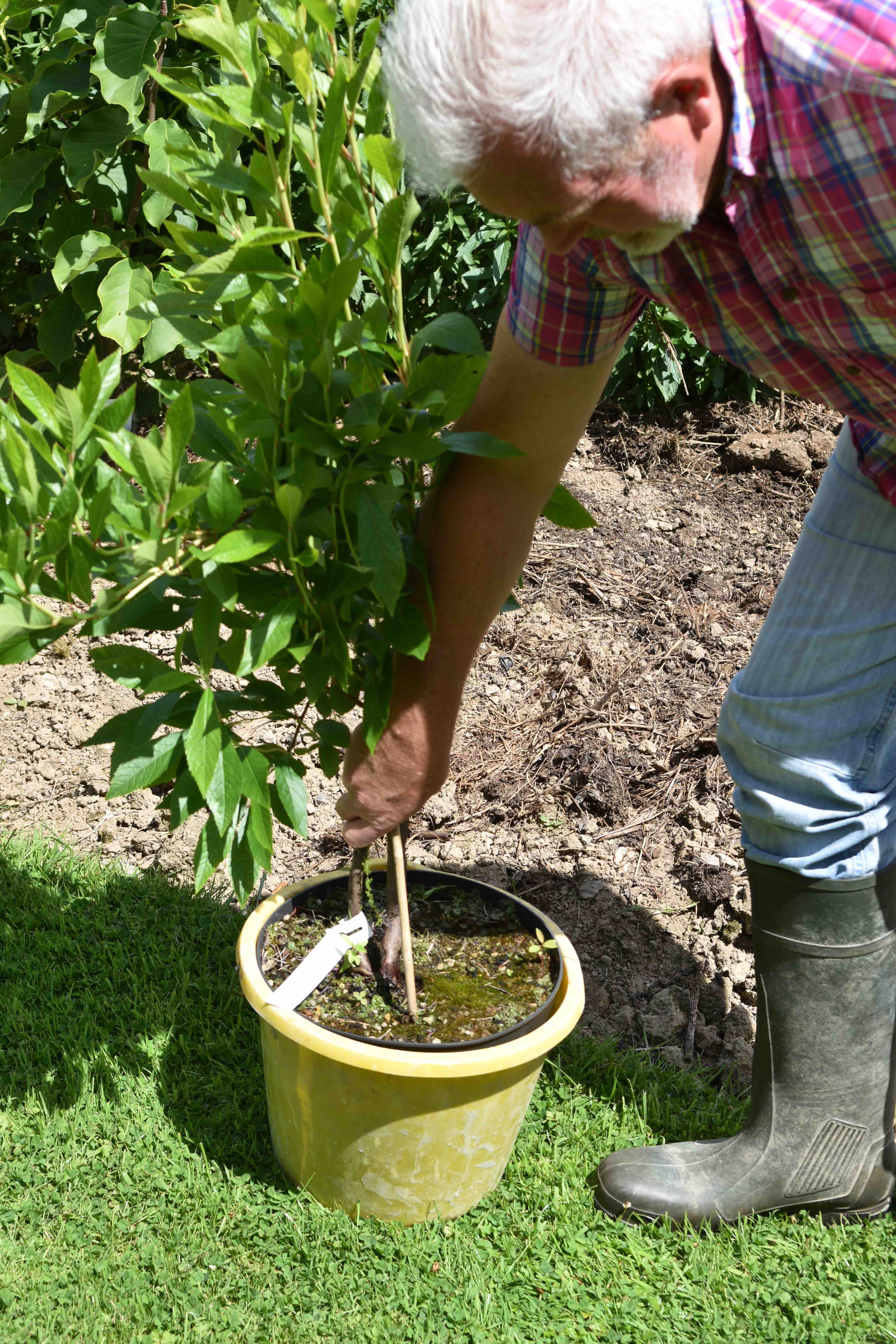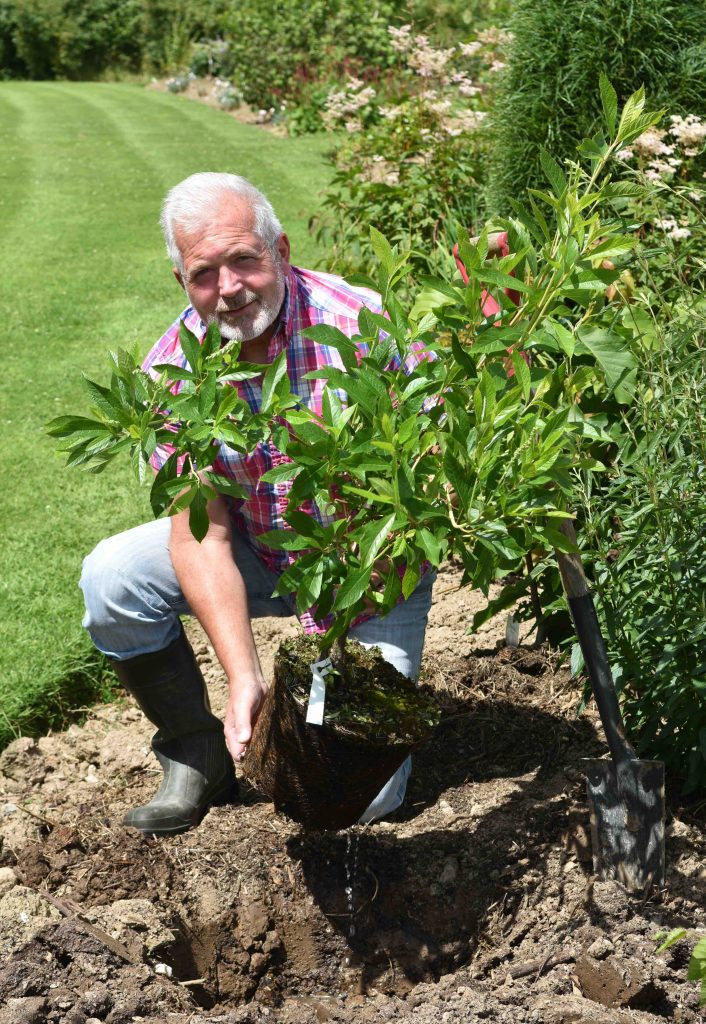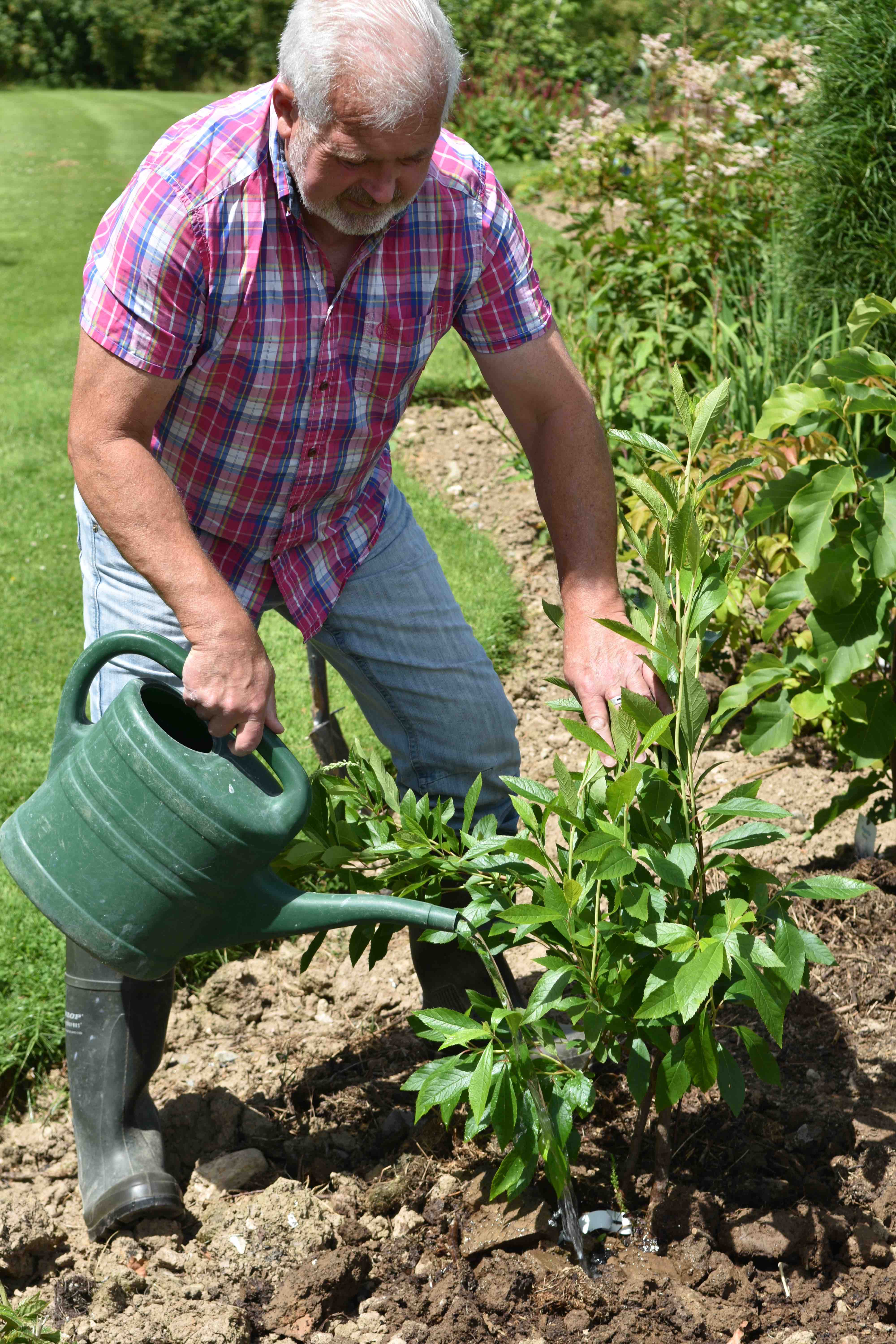The weather may be scorching but that doesn’t stop us gardeners wanting to plant. Even if you only went to Nags Hall to get some compost or even a coffee, it is difficult to resist a new plant, especially when it is in flower. Many of our gardens lack shrubs in bloom at this time in summer so flowering hibiscus, buddlejas, clethra and hydrangeas are very tempting.
Of course, the best thing to do is to make a note and wait till autumn to plant. When I was in my teens, working at Nags Hall, the range of potted plants in summer was limited and it was standard practice to order plants for collection or delivery in autumn – something that would be unacceptable now when we all want plants when we want them.
Planting in a heat wave is not easy, but it is possible. But you have to be prepared to water, or as a politician might say: water, water, water.
When your plant is in its pot, at the nursery or when you get it home, it will need watering as much as once a day to keep it alive. Once planted out, until the roots grow out of the rootball and into the soil, it will need watering just as frequently. If the rootball dries out, the compost will shrink and when you apply water it will run around the edge of the roots and will not actually moisten the compost. So it is essential to get the roots thoroughly wet before planting and then to keep them moist. If a recently planted shrub is wilting it is often best to carefully lift it, soak it in a bucket and then replant it

Before you plant your shrub, soak it in a bucket of water for half an hour or more so the compost and plant are fully charged with water. It is very difficult to wet the roots once it is planted so this is possibly the most important step in planting.
Dig a large hole and mix in compost with the excavated soil and in the bottom of the hole. Then water the hole so the soil is moist. You can then place the plant in the hole – you can see the water running from the rootball below.

Replace the soil around the roots and firm gently and then water again. This is as much to work the soil around the roots and eliminate any large air pockets in which the roots could dry out and die.

Once planted, you must water your new plantings frequently to prevent them from drying out.
Water-saving tips
Only water those plants that really need it. In most gardens that means pots and containers. In this scorching heat they will need frequent watering. Try to water early in the morning and in the evening but keep an eye on them because well-filled pots will need lots of water.
Group the pots so they shade each other and make watering easier. Take down hanging baskets and place them in shade. Hanging baskets dry out really quickly and are difficult to keep moist in this sort of weather.
Use cooled, domestic water for watering. Washing up water is fine for watering in borders but avoid using too frequently on potted plants.
Try not to water lawns or established shrubs but new plantings will need watering. Give a good soak every few days rather than a sprinkle every day.
Lawns will recover from drought when the weather cools even if they do look brown now. Raise the height of the mower blades so the grass is left longer.
Mist houseplants to maintain humidity around them and prevent brown leaf tips.
Weeds use water too so keep them under control. Hoe around plants to create a ‘dust mulch’ which actually helps retain soil moisture.